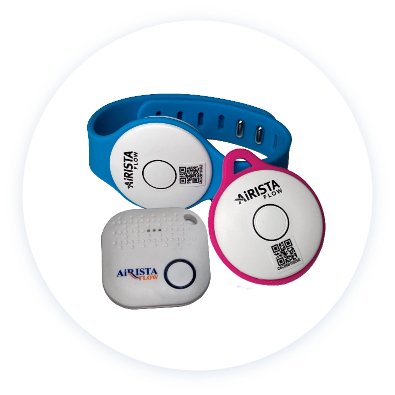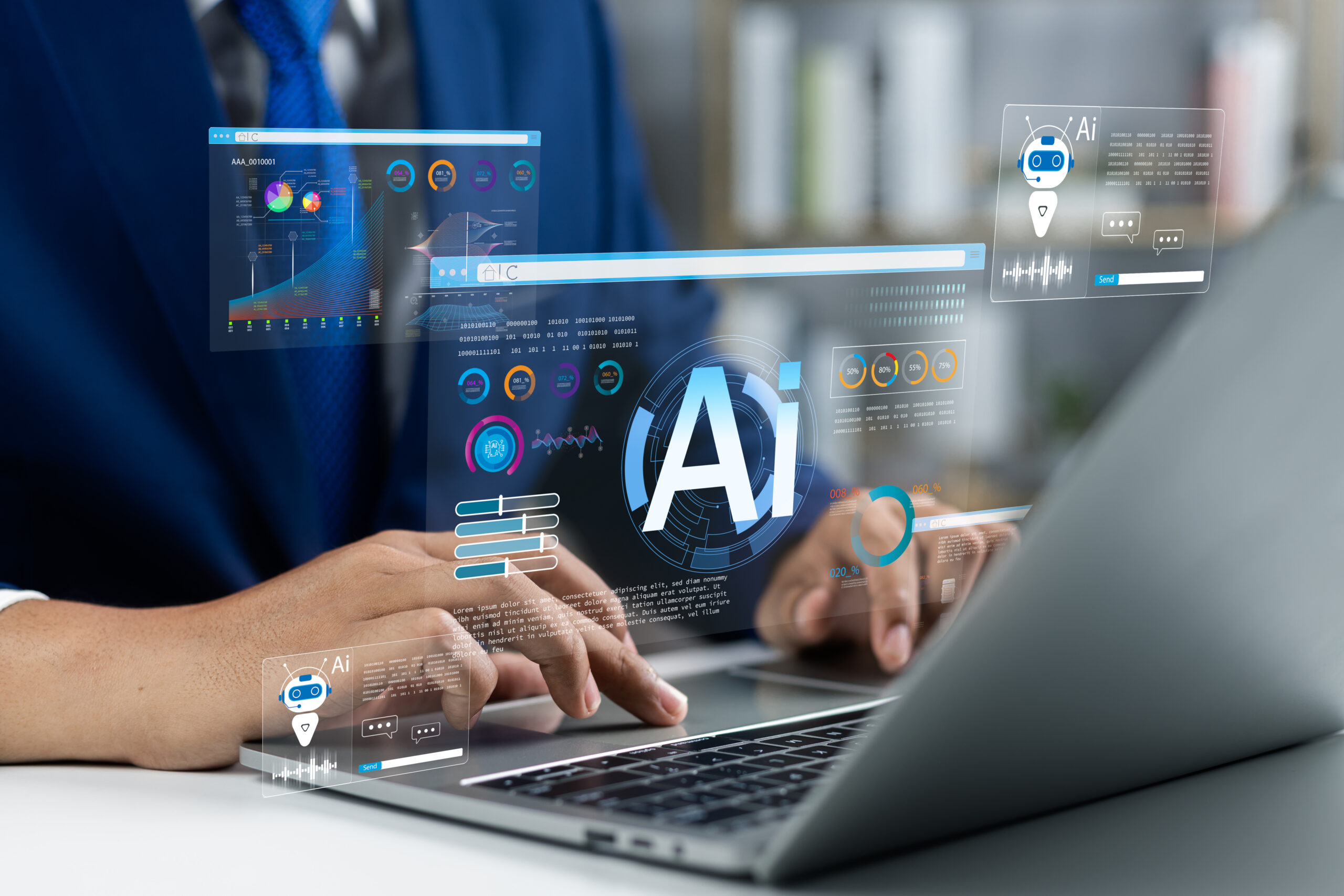Real-Time Location Systems (RTLS) are transforming business operations by providing precise location tracking and data analytics. These systems use various wireless technologies to monitor and manage assets, personnel, and workflows in real time by analyzing data on usage patterns and availability. In today’s fast-paced environment, RTLS solutions are essential for enhancing business intelligence and operational efficiency.
AiRISTA leads in RTLS innovation, offering advanced solutions for various industries. By integrating AI with RTLS, AiRISTA equips businesses with tools to gather actionable insights and make informed decisions. RTLS not only streamlines operations but also fosters a data-driven culture, leading to improved productivity and cost savings. This article explores how leveraging RTLS can significantly boost business intelligence and operational efficiency, transforming organizational functions.
Understanding RTLS
Definition and Components of RTLS
Real-Time Location Systems (RTLS) are sophisticated technology solutions designed to track assets and provide continuous monitoring of personnel and equipment within defined areas. By offering real-time visibility, RTLS empowers businesses to optimize operations, enhance security, and improve overall efficiency.
What are Real Time Location Systems?
RTLS refers to a network of hardware and software components that determine and track the location of objects or people in real-time. The system collects location data and processes it to provide valuable insights and support decision-making processes.
Key Components: Tags, Readers, Software
Tags: Small devices attached to assets, equipment, or personnel that emit signals picked up by readers to determine their location.
Readers: Also known as sensors, they capture signals from tags and relay the information to the RTLS software.
Software: Processes data from readers, providing real-time location information and analytics through a user-friendly interface (Example: Sofia RTLS Software).

Types of Technologies Used in RTLS
RTLS employs various technologies for precise location tracking, including:
RFID (Radio Frequency Identification): Uses electromagnetic fields to identify and track tags attached to objects.
Wi-Fi: Leverages existing wireless networks to locate devices and tags.
Ultrasound: Utilizes sound waves to detect and track objects.
Infrared: Uses infrared light for close-range tracking and identification.
By integrating these technologies, RTLS offers flexible and scalable solutions tailored to the specific needs of different industries.
The Role of AI in Enhancing RTLS

Basics of AI in RTLS
Artificial Intelligence (AI) significantly enhances RTLS capabilities. By integrating AI, businesses can transform vast amounts of location data into actionable insights, leading to more informed decision-making and improved operational efficiency.
How AI Transforms Data into Actionable Insights
AI algorithms analyze continuous data streams from RTLS, analyzing data to identify patterns, trends, and anomalies that might be overlooked by human analysis. For example, AI can detect unusual movement patterns of assets, indicating potential issues before they escalate. This predictive capability allows businesses to address problems proactively, minimizing downtime and optimizing resource utilization.
Examples of Machine Learning Algorithms Used in RTLS
Clustering Algorithms: Group similar data points, helping identify patterns and segment data for detailed analysis.
Predictive Analytics: Analyzes historical data to forecast future events, such as equipment failure or maintenance needs, allowing for timely interventions.
Anomaly Detection: Identifies deviations from normal patterns, indicating issues like unauthorized access or equipment malfunctions.
Benefits of AI-Driven RTLS
Improved Accuracy and Decision-Making: AI enhances RTLS data precision, reducing errors and increasing location tracking reliability, forming the foundation for better decision-making processes.
Strategic Planning: Companies use AI-driven RTLS data to inform strategic decisions, optimize supply chain logistics, enhance workplace safety, and improve asset management.
Competitive Advantage: AI-enhanced RTLS provides faster and more accurate insights, allowing businesses to adapt quickly to market changes, innovate operations, and maintain industry leadership.
Applications of RTLS in Business Intelligence
RTLS plays a pivotal role in modern Business Intelligence (BI) by providing continuous, accurate data on the location and movement of assets and personnel. This real-time data integration enables businesses to gain immediate insights, leading to more agile and informed decision-making. For example, companies can monitor supply chain logistics in real-time, allowing them to apply AI algorithms to weather, traffic, etc. to address issues promptly and optimize operations. Additionally, analyzing data from RTLS enables businesses to gain immediate insights and make more agile and informed decisions.
The opportunity for AI increases as software engines combine multiple sources of data to drive better business decisions. AiRISTA’s Flow Studio low-code design environment allows users to quickly chain AI modules together in a drag-and-drop interface. The resulting code acts as an event bus, applying AI to real-time data input and driving smarter responses.
Improved Patient-Doctor Communication
In healthcare, RTLS significantly enhances patient-doctor communication. By tracking the location of patients, staff, and medical equipment in real time, hospitals can ensure that doctors and nurses are promptly informed about patient needs. This system reduces wait times, enhances patient care, and improves overall hospital efficiency.
Enhanced Emergency Response Systems
RTLS improves emergency response systems across various sectors. In healthcare, it enables rapid location tracking of critical equipment and personnel during emergencies, ensuring swift and coordinated responses. In industrial settings, RTLS helps monitor hazardous areas and quickly locate workers in case of accidents, enhancing safety protocols and reducing response times.
Improving Operational Efficiency with RTLS
RTLS revolutionizes asset tracking and inventory management by providing real-time visibility into the location and status of assets. Environmental monitoring also plays a crucial role in keeping sensitive items and spaces at safe levels, as well as providing real-time visibility into the status of mobile medical equipment, including the collection of temperature, humidity, and CO2 readings. Businesses can efficiently monitor the movement of equipment, tools, and inventory, reducing the time spent searching for misplaced items. This streamlined process leads to improved inventory accuracy, reduced losses, and optimized stock levels. Additionally, analyzing data from RTLS helps businesses efficiently monitor the movement of equipment, tools, and inventory.
Optimizing Workforce Management and Safety
By tracking the real-time location of personnel, RTLS enhances workforce management and safety. Managers can efficiently allocate tasks based on the proximity and availability of workers, leading to increased productivity. Additionally, RTLS improves safety by monitoring employee movements in hazardous areas and ensuring compliance with safety protocols. In case of emergencies, the system can quickly locate and assist at-risk employees, minimizing the risk of injury.
Reducing Downtime and Maintenance Costs
RTLS helps reduce downtime and maintenance costs by enabling predictive maintenance and efficient resource allocation. The system monitors the usage and condition of critical equipment, predicting potential failures before they occur. This proactive approach allows for timely maintenance, preventing unexpected breakdowns and costly repairs. Furthermore, RTLS optimizes the deployment of maintenance personnel, ensuring that resources are used effectively and downtime is minimized.
Industry-specific Applications of RTLS
Healthcare: Patient and Equipment Tracking
In healthcare, a real-time location system (RTLS) is essential for tracking patients and equipment in real-time (LINK 1). This technology ensures medical staff can quickly locate patients and critical equipment, reducing wait times and enhancing patient care. Additionally, it improves operational efficiency by ensuring that medical devices are readily available when needed, minimizing delays in treatment.
Manufacturing: Assembly Line Monitoring and Safety Enhancements
RTLS plays a crucial role in manufacturing by monitoring assembly lines and enhancing safety protocols. Real-time tracking of tools, parts, and workers allows for streamlined production processes and immediate identification of issues that could disrupt the workflow. Moreover, RTLS enhances worker safety by monitoring hazardous areas and ensuring that safety procedures are followed, reducing the risk of accidents.
Retail: Inventory Management and Customer Experience Improvement
In retail, RTLS improves inventory management by providing real-time data on stock levels and product locations. This reduces inventory discrepancies and ensures that shelves are always stocked. Additionally, RTLS enhances the customer experience by enabling the quick location of products within the store, reducing search times, and improving overall customer satisfaction.
Recap of the Benefits of RTLS Integrated with AI for Business Intelligence and Operational Efficiency
Integrating RTLS with AI offers numerous benefits for business intelligence and operational efficiency. AI-driven RTLS provides accurate, real-time data that enhances decision-making, optimizes asset tracking, and streamlines workforce management. Businesses can leverage these insights to improve productivity, reduce operational costs, and enhance safety. Analyzing data from RTLS helps businesses improve productivity, reduce operational costs, and enhance safety. The predictive capabilities of AI allow for proactive maintenance and issue resolution, minimizing downtime and ensuring smooth operations.
Future Outlook for RTLS Technology in Enterprise Environments
The future of RTLS technology in enterprise environments is promising, with advancements in AI and machine learning set to enhance its capabilities further. As technology evolves, RTLS will become more integral to business operations, providing deeper insights and greater automation. Enterprises can expect improved scalability, better integration with other IoT devices, and enhanced data analytics, driving innovation and competitive advantage. As businesses continue to embrace digital transformation, RTLS will play a crucial role in shaping the future of operational efficiency and business intelligence.





